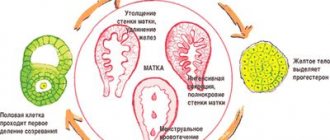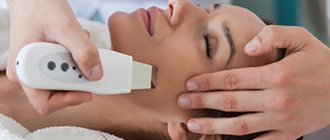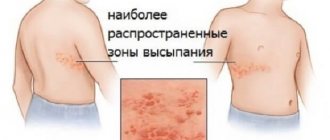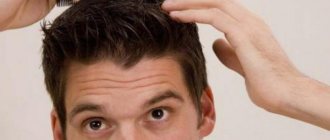You can understand about various diseases by looking at the skin. In a healthy person, it has a light blush and an even tone; no rashes or spots are observed. When hypothermia occurs, cold pimples often appear, which cause severe pain. The seals are not only large, but also fester, which also causes inconvenience. It is almost impossible to disguise such an eel, since it is often burgundy or bluish in color. It is important to know how to get rid of cold acne on the face and prevent inflammation in the future. With the right approach, the problem will not return, and the traces will quickly disappear.
Causes
The formation of cold pimples occurs when favorable conditions arise for the growth of bacteria in the pores of the skin.
Against the background of ARVI, so-called cold pimples often appear on the skin. This is due to the weakening of the body during this period.
Cold pimples are often painful, swollen, and their color is bright red, sometimes bluish. Diagnosis is carried out by a dermatologist, therapist, endocrinologist, gastroenterologist.
Treatment: hygiene, local antiseptics (boric acid, etc.), baths with salt or algae extract, ointments with ichthyol.
In an ordinary person, immunity allows one to cope with this situation. Health problems cause disruption of sebum production, hair follicles become clogged, and pathogenic microflora is created.
How to get rid of acne quickly
Acne is a common skin problem, affecting about 85 percent of the population.
The most common causes of the occurrence and development of colds are:
- viral infections and colds (sore throat, bronchitis, sinusitis, flu);
- disorders of the digestive and endocrine system;
- frequent depression and stress;
- hormonal disbalance;
- lack of sleep and chronic fatigue;
- unhealthy diet (fatty foods);
- hormonal imbalance in the body.
There are often cases when rashes are observed after hypothermia or prolonged exposure to a draft.
Localization Features
Cold pimples are often diagnosed on the face. However, they can also appear on other parts of the body. It has been established that the location largely depends on various circumstances and concomitant diseases.
Pimples on the nose
They can form due to prolonged exposure to cold weather or excessive sweating. In the summer, inflammatory processes are caused by frequent touching of the nose and skin contamination. With rare hygienic procedures, multiple lesions appear.
Pimples on lips
The disease is diagnosed in cases of hypothermia, infectious diseases, and licking of lips in windy weather. In the latter case, the skin dries out, becomes rough and cracks.
Cold pimples on forehead
Placement in this area indicates intoxication, dysfunction of the gastrointestinal tract and the need to cleanse the body. In case of problems with the gallbladder, the rash is located along the hairline.
Acne on the chin
In this case, there may be several reasons. In addition to problems with the intestines and stomach, their presence indicates poor hygiene or an allergic reaction to cosmetics.
In addition, the appearance of acne in adolescents during adolescence is not uncommon.
Acne on the buttocks and back
There are practically no sebaceous glands on the skin of the buttocks. This part of the human body is constantly under clothing. Inflammation occurs due to lack of air and dry skin.
Rashes on the back indicate an allergy, which is caused by increased sweating, the use of cosmetics, or a reaction to synthetic clothing.
Single large pimples appear with constant consumption of fatty foods.
How to get rid of acne marks
Facial rashes are a common problem that almost every person faces.
Small and multiple rashes indicate problems with the endocrine system and disruption of hormone levels.
The appearance of cold pimples in a man or woman in the intimate area indicates hypothermia of the body at low temperatures outside, as a result of swimming in cold water or taking a contrast shower.
ethnoscience
Our grandmothers also knew many excellent traditional medicine recipes on how to quickly cure a cold pimple. Below are a few recipes.
Combine 2 tbsp in a container. chamomile flowers and the same amount of calendula inflorescences, pour the mixture into 200 ml of boiling water - use the infusion after cooling and filtering as a lotion for wiping the skin.
Take a leaf from a five-year-old aloe plant, thoroughly remove thorns and skin, attach patches to the surface of the defect and leave overnight.
Make a compress from the pulp of a fresh cucumber - grate it and place it on a gauze pad, which is secured directly above the pimple.
Dilute the tremors with warm water with a few drops of lemon juice - apply the mixture directly to the pimples, rinse off after 15-20 minutes with any herbal decoction, for example, chamomile.
Combine white clay with tomato juice and liquid honey - spread the mixture over the affected areas of the skin, after preliminary steaming, remove with warm water and cleansing lotion.
Traditional medicine recipes provide assistance in the initial stages of the formation of subcutaneous defects of a cold nature. However, it is recommended that each of them be first agreed with a doctor in order to avoid unwanted reactions, for example, allergies to the components of medicinal products.
Symptoms
Cold pimples are unpleasant and painful formations that develop gradually and are difficult to treat.
At the first stage of development, the problem area on the skin thickens and becomes inflamed. Then, outwardly, you can observe a tubercle of a rich red color, around which swelling appears.
Since the pathological process occurs under the epithelium, there is no purulent accumulation at the top of the pimple. The internal process of pus formation occurs over 7–15 days.
Cold pimples have a number of distinctive features:
- Redness appears at the site of the new formation and pain is felt upon palpation.
- They are large in size and have a dense structure.
- The inflammatory process covers a wide area, so it is quite difficult to disguise them.
- As it grows, the color may change to purple or dark blue.
Due to the deep location of purulent accumulations, it is not possible to squeeze out such a pimple in the usual way. In addition, with strong pressure, nearby healthy tissues are injured, and inflammation becomes more extensive. Pathogenic bacteria can enter the bloodstream and spread throughout the body.
How to treat acne?
Treating acne can be a lengthy process. Thus, when prescribing Clindovit®, it is recommended to take a course lasting 6-8 weeks6.
Clindovit® is a topical antibiotic that exhibits antibacterial activity against propionibacteria6. The drug helps reduce free fatty acids on the skin from approximately 14 to 2%6. It is recommended to combine Clindovit® with azelaic acid (for example, Azelik® gel) or benzoyl peroxide to reduce the risk of antibiotic resistance28.
Diagnostics
When acne appears, most patients seek medical help from a dermatologist. This doctor will conduct an external examination and question the patient regarding the existing symptoms and associated disorders in the body.
Why can our articles be trusted?
We make health information clear, accessible and relevant.
- All articles are checked by practicing doctors.
- We take scientific literature and the latest research as a basis.
- We publish detailed articles that answer all questions.
Based on the available information, the patient may be referred to specialized specialists:
- Therapist. The most common cause of such a rash is colds, accompanied by weakness, elevated body temperature, and decreased immunity.
- Gastroenterologist. This doctor will help identify disturbances in the functioning of the digestive system and identify possible accumulations of toxins in the gastrointestinal tract.
- Endocrinologist. It is not uncommon for colds to appear due to changes in hormone levels.
After examination and study of the medical history, the patient is given a referral for laboratory tests and additional examinations.
A general or biochemical blood test will help identify an infection in the body or problems with the functioning of internal organs.
In case of problems with the endocrine system, an analysis of hormone levels is performed.
How to relieve acne inflammation
Acne is a widespread problem.
For regular infectious diseases, weakness and fatigue, the patient is tested for HIV infection.
It is worth understanding that eliminating acne without treating the concomitant disease is impossible. Therefore, it will not be possible to solve this problem on your own. The examinations will help the doctor determine the cause of the pathology, as well as select an adequate treatment course.
Treatment
At the first manifestations of cold acne, every person tries to get rid of them as quickly as possible. After all, unlike other types of rashes on the body, they not only have an unpleasant appearance, but also create a feeling of discomfort and pain.
Self-medication is dangerous with complications!
Attention
Despite the fact that our articles are based on trusted sources and have been tested by practicing doctors, the same symptoms can be signs of different diseases, and the disease may not proceed according to the textbook.
Pros of seeing a doctor:
- Only a specialist will prescribe suitable medications.
- Recovery will be easier and faster.
- The doctor will monitor the course of the disease and help avoid complications.
find a doctor
Do not try to treat yourself - consult a specialist.
Today, there are a large number of medications and cosmetics that help remove acne on the skin. However, many of them have contraindications, so you should get your doctor's approval before using them.
Phototherapy for acne
Acne is an inflammatory skin disease caused by a disorder in the hair follicles and sebaceous glands.
At home, some procedures will help solve the problem of rash:
- washing should be carried out regularly with water at room temperature with preparations containing salicylic acid or triclosan;
- in the presence of concomitant diseases, it is necessary to pay attention not only to the cosmetic problem, but also to the general health of the body;
- To improve skin condition, it is recommended to take baths with sea salt or algae extract.
During the treatment process, you should not take rash actions. First of all, this concerns squeezing pimples, which only leads to complications and the spread of infection.
Using ice or cold compresses not only constricts blood vessels, but also reduces the resistance of healthy tissue to bacteria.
Steaming and hot baths will lead to more intense development of the infectious process and the formation of scars after healing.
Treatment of colds with antiseptic ointments
If folk remedies do not suit you, then you can use the following drugs.
Ointments help to speed up the maturation of a cold pimple and promote skin regeneration.
Balsamic liniment or Vishnevsky ointment
Consists of natural ingredients: birch tar, castor oil and xenoform. Thanks to its properties, acne matures faster. You need to use it at night, applying a gauze bandage with the drug to the inflamed area. In the morning, the gauze is removed, the area is washed and treated with an antiseptic. The pimple matures for two days and soon the pus comes out. You should apply it for another 2 days for everything to come out completely. Many people are put off by the strong and unpleasant smell.
Levomekol
The antibacterial and anti-inflammatory effect allows the purulent formation to quickly come out and the wound to heal. The product should be spread on the pimple and allowed to absorb.
Baziron AS
The gel normalizes the functioning of the sebaceous glands, which prevents the formation of new acne. Has an antimicrobial effect. Apply twice daily.
Salicylic ointment
The main component in the composition is salicylic acid. It is known to dry out and heal acne. Has an antiseptic effect on colds. In addition, it acts on the skin as an exfoliant. You need to use it 4-5 times a day. Do not use other medications with this drug.
Syntomycin ointment
Antimicrobial antibiotic. Reduces inflammation, heals and relieves pain. It will help in the most severe cases, but may cause allergies. It tends to pass through the placenta, so it is contraindicated during pregnancy. Apply it overnight and cover it with a band-aid.
Ichthyol ointment
Ichthyol and Vaseline, which is part of the ointment, quickly heals. The pus from cold pimples goes away and the wounds dry out. Apply a bandage with ointment overnight.
Erythromycin ointment
An antibacterial antibiotic blocks the reproduction and growth of staphylococcus and streptococcus. As a result, the skin problem goes away. Do not use constantly and for a long time, as the body gets used to it. It is contraindicated during lactation and pregnancy. Apply 3 times a day.
Zinc ointment
Disinfects, reduces irritation and inflammation, dries. Suitable even for children. Apply a thin layer to the problem area once a day.
Retinoic ointment
Consists of isotretinoin and vitamin A. It has anti-inflammatory, antiseborrheic and immunomodulatory effects. It is advisable to apply twice a day on a previously cleaned surface.
Prevention
Experts say that treating colds is much more than preventing their occurrence. To do this, it is worth following several preventive recommendations:
- Avoid drafts in hot weather and do not stay in the cold for long periods of time.
- If there is increased sweating, take a shower and dry your body well with a towel.
- In windy weather, do not go out sweaty or immediately after taking a bath.
- Wipe your face morning and evening with a cotton swab soaked in tonic or lotion. This will help cleanse the skin of dust and sebaceous secretions, and also prevent the formation of fatty plugs.
- Lead an active lifestyle, take walks in the fresh air, play sports, give up bad habits.
- Balance your diet - avoid fatty foods, flour products and sweets.
- Treat even seemingly minor illnesses in a timely manner Regularly undergo preventive medical examinations.
- Avoid frequent overwork and stressful situations. In the autumn and spring, take vitamin complexes agreed with your doctor.
If you still cannot prevent the appearance of cold-related acne, you should not engage in treatment, but it is important to consult a doctor in a timely manner.
Preventive measures
Unfortunately, the body does not develop immunity to various skin rashes. An illness can appear at any time and ruin your mood. Nutrition, work and rest schedule (you need to sleep at least 8 hours a day), and exercise have a huge impact on the condition of the skin. An active lifestyle with a proper daily routine guarantees good health of the whole body. For this reason, it is recommended to follow simple recommendations to help reduce the likelihood of acne recurrence:
- hypothermia must be avoided;
- thoroughly clean the epidermis of impurities and cosmetics;
- carefully approach the choice of cosmetics, trying not to buy low-quality products;
- remove harmful foods from the diet;
- quit smoking and frequently drink alcohol in large quantities;
- avoid stressful situations;
- undergo regular medical examinations.
Women should definitely remove their makeup before going to bed, giving the dermis a rest at least at night. Many men are opponents of any skin care products, but in vain. Using cosmetics to remove the stratum corneum, consisting of fat, dirt and dead particles of the dermis, is simply necessary for any skin type. You should always dress according to the weather, that is, you should not freeze or overheat. In the summer, it is very common to see colds on the head and back in people who first sweated outside and then went into an air-conditioned room.










